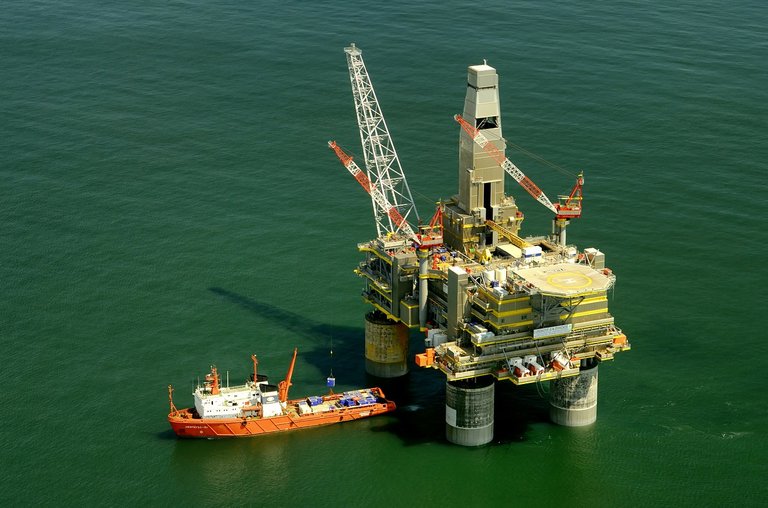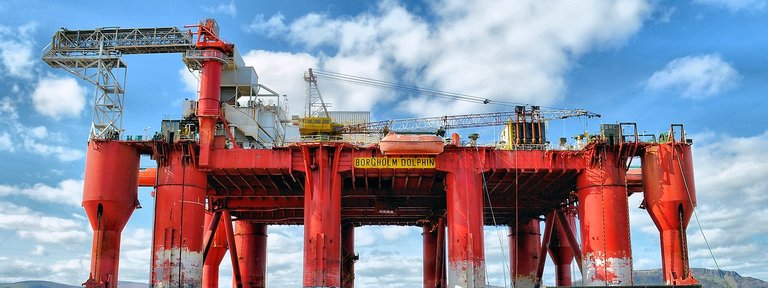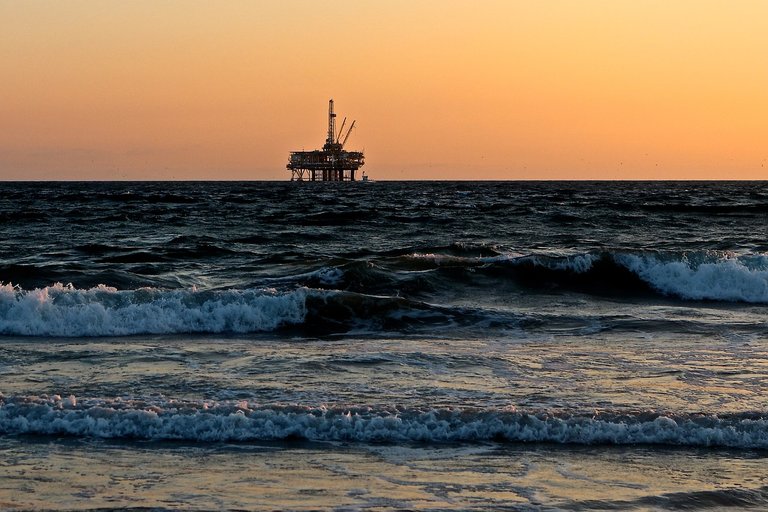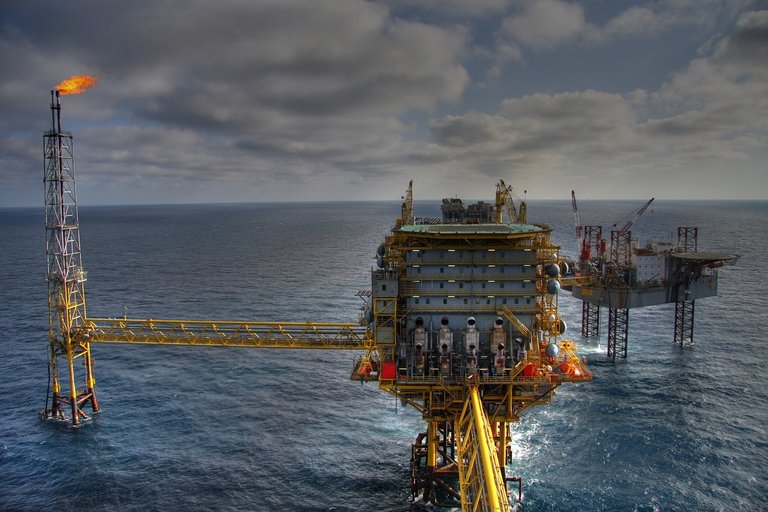Now we all are aware that icebergs which are giant chunks of ice float on water. If objects like stones and padlocks tend to sink immediately they are thrown into water bodies, why on earth would giant sized structures like icebergs float?? I would love to explain this but we all know this isn't what this post is about.
Source
Now before I get into the simple science of oil rigs, I think I should do a little introduction to oil rigs. Offshore Oil rigs or platforms are structures constructed for the purpose of oil drilling and extraction.
Source
Now back to the question, how do oil rigs float. The answer lies in something simple - Buoyancy. This simple but awesome bit of physics was discovered by mistake by a scientist named Archimedes. Now buoyancy is used to describe the term that accounts for the floating of objects. The principle of floatation says that a body that is partially or wholly immersed in water will displace the same weight of water which it is immersed in.
Source



Buoyancy is calculated by subtracting the weight of the structure(oil rig in this case) from the weight of the water displaced by the oil rig. It follows that this value should be positive in order for the oil rig to float. As long as this condition is met, the oil rig will keep floating. Due to the difference in densities between sea water and fresh water, an oil rig placed on salt water will have a greater buoyancy than an oil rig placed on fresh water.
Source
Source
I hope we were able to learn something from all of this. Please upvote and resteem if you enjoyed this. Cheers!!


This is really informative. It brought back the memories of high school when my physics teacher explained the archimedes principle
Thanks for this post
I'm glad i was able to bring back those memories. Cheers!!
Truly learn alot from this phenomenon
Interesting publication. Thanks for sharing.
I also invite you to visit my profile, follow and vote my last message, please. Greetings.